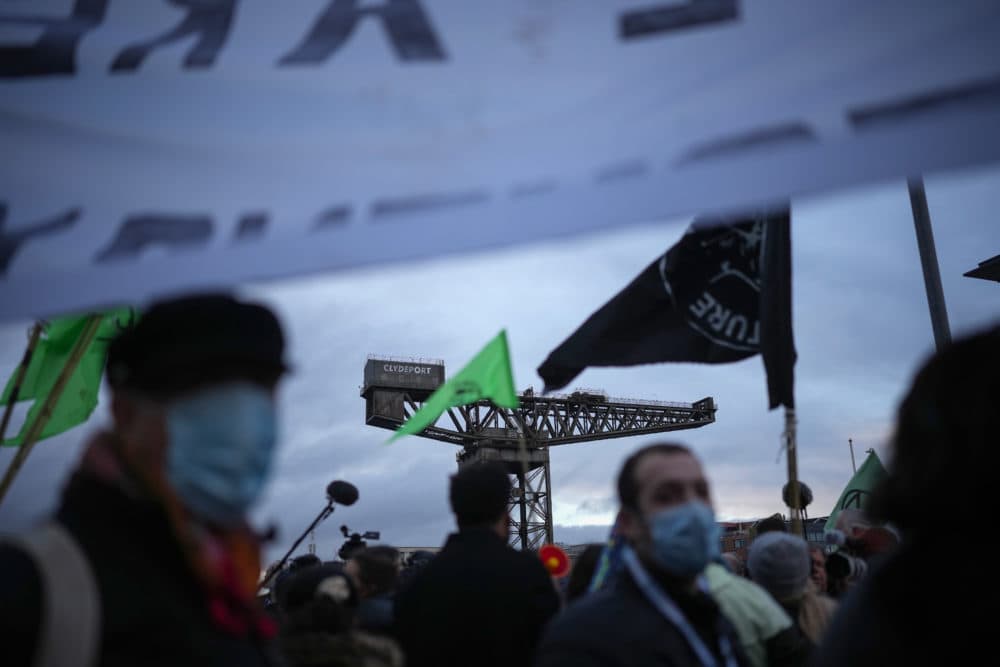Advertisement
Commentary
Who should pay for the climate catastrophe?

Catastrophic cyclones, rising seas, and saltwater intrusion into critical farming regions are displacing masses of refugees in Bangladesh, where 53 million people live in coastal zones only a few meters above sea level. Climate change is devastating this acutely vulnerable nation.
The climate crisis will only worsen — in Bangladesh and elsewhere — without a radical transformation of global energy systems. To that end, representatives from 197 nations have convened at the COP26 summit in Glasgow this week to draft the next phase of international climate strategy.
Diplomats are attempting to set a course for net-zero carbon emissions by 2050 and, crucially, seeking an equitable array of financial flows between nations that will accelerate the shift to renewable energy and limit the impacts of the warming climate.
The conference is not a meeting of equals. Since the Rio Earth Summit in 1992, international climate agreements have acknowledged the stark disparities in wealth, infrastructure, and technological know-how between developed and developing nations.
... if measured from the beginning of a calendar year, the carbon emissions of an average American surpass the yearly emissions of a typical Bangladeshi on January 13.
And they have also recognized the gross imbalance in the amounts of greenhouse gas that different nations produce. Responsibility for carbon pollution today falls mainly on the industrialized Global North, where per capita emissions are sharply higher.
As illustration, if measured from the beginning of a calendar year, the carbon emissions of an average American surpass the yearly emissions of a typical Bangladeshi on January 13.
The United States owns the largest share of cumulative emissions that are correlated with the observed rise in global temperatures since the dawn of the industrial era. China is gaining fast, but it remains a distant second.
At the opposite end of the spectrum, some of the nations most threatened by the effects of climate change, including the uniquely exposed small island states, have made only negligible contributions to global warming.
The divergent circumstances of the world’s nations — and their historical legacies — make a one-size-fits-all policy prescription problematic.
A demand for all countries to adopt a plan to achieve net-zero carbon emissions by 2050, issued in October by the United Kingdom’s Alok Sharma, President of COP26, angered members of the “Like-Minded Developing Countries” group. This alliance, which includes Bangladesh, China, India, and other developing countries of varying sizes, said Sharma’s request was “against climate justice.”
The LMDC reasoned that by tracking all nations on the same decarbonization timeline, regardless of their historical contributions to planetary warming, the already developed countries were perpetuating past injustices. They argued for requiring the advanced economies to zero out emissions sooner than 2050 in order to allow more of the world’s remaining carbon budget to be allocated to countries still in earlier stages of industrialization.
Such disputes between developed and developing nations are expected at the annual COP meetings, and they often center on climate finance — a central issue at COP26. Reaching agreement on complex questions of who should pay and how much has been a prickly diplomatic challenge.
For example, the developed nations pledged in 2009 to mobilize $100 billion annually in grants and loans by 2020, but they fell short of that goal by about $20 billion. Negotiators are working on the details of new financing mechanisms in Glasgow, aiming to avoid similar trust-eroding failures in the future.
President Biden has already taken a significant step in support of the developing nations with the announcement this week of a $3 billion per year commitment to his new President’s Emergency Resilience and Adaptation Plan. But the plan may not adequately address a third area where aid is sorely needed, namely what the Paris Agreement refers to as “loss and damage.”
This “loss and damage” category encompasses not only extreme weather events but also slow-onset phenomena such as sea-level rise, ocean acidification, loss of biodiversity, and desertification. Although developed countries are inclined to channel funds into improvements in climate resilience or projects that reduce emissions, there will inevitably be climate impacts that less wealthy societies are unable to anticipate or avoid, impacts that overwhelm efforts to adapt.
The burden of climate-related damages on developing nations makes those states less capable of implementing their adaptation and decarbonization plans. As the effects of climate change intensify, their needs will grow exponentially. But the developed countries have rejected the premise that they bear an obligation to provide compensation for these losses.
In the backrooms of COP26, negotiators will take on the knotty issues of climate debt and its precursor, climate justice. If their efforts are not fruitful, the summit will be a failure for the most vulnerable nations.
The notion that a country like the U.S. would be indebted to a relatively impoverished nation like Bangladesh runs counter to the historical norm of developed countries being the creditors in international finance. The moral calculus of climate debt inverts the conventional model of relations between rich and emerging nations.
As COP26 proceeds, geopolitical posturing and pledges for emissions reductions from the major powers will dominate the news from Glasgow, at least in the United States. In nations like Bangladesh, where the people are already subject to chaotic disruptions of everyday life, the most critical developments concern money.
In the backrooms of COP26, negotiators will take on the knotty issues of climate debt and its precursor, climate justice. If their efforts are not fruitful, the summit will be a failure for the most vulnerable nations.
This story is part of Covering Climate Now, a project aimed at strengthening the media’s focus on the climate crisis. WBUR is one of 400+ news organizations that have committed to a week of heightened coverage around the COP26 climate summit in Glasgow. Check out all our coverage here.
